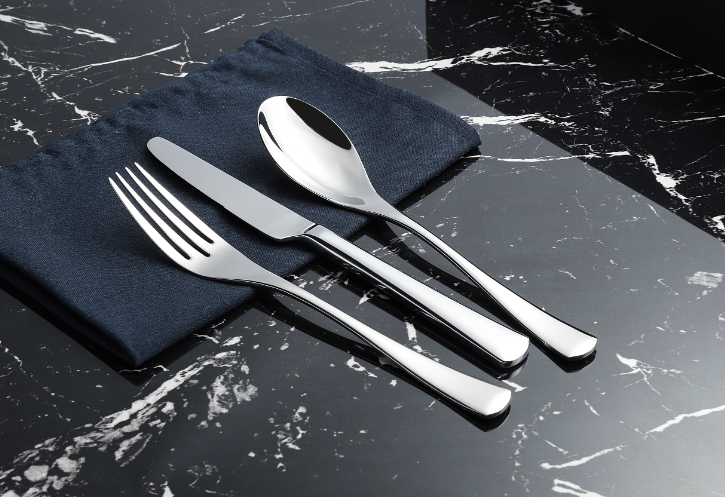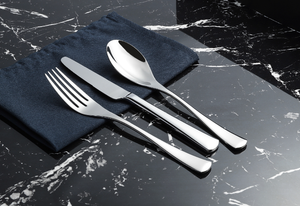
Inspection methods and standards for stainless steel tableware Inspection, factory verification and certification services
Stainless steel tableware, as daily-use items that come into direct contact with food, directly affect the health of consumers. During the inspection, factory verification, and product certification processes of stainless steel tableware, a strict quality control system must be established. This article will systematically elaborate on the inspection standards, testing methods, and quality certification requirements for stainless steel tableware, providing professional guidance for relevant practitioners.
I. Basic Inspection and Certification for Stainless Steel Tableware
(1) Appearance Quality Inspection Certification
Surface Quality Certification Standards
Surface finish requirements: The surface should be smooth and clean, with no obvious scratches.
Defect control: No severe blemishes, depressions, or other surface defects.
Edge treatment: The edges have no rough feeling and no sharp burrs.
Process Quality Certification
Welding quality: The welded area is firmly attached without any cracks.
Uniformity of polishing: No unevenness in polishing causes differences in luster.
Completeness check: No obvious defects such as contamination or creases.
(2) Special Performance Inspection Certification
Thickness Tolerance Certification
A type of tableware: The thickness tolerance is controlled within -5%
Class II tableware: The thickness tolerance is controlled within -3% to 5%.
Export products: Executed in accordance with higher standards requested by customers.
Welding performance certification
Welding flatness: The welding area is flat and straight.
Welding integrity: No burnt or incomplete welding phenomena.
Strength test: The welded area is firmly and reliably connected.
II. Corrosion Resistance Certification System
(1) Corrosion Test Certification
Accelerated Corrosion Test
Test solution: NaCl aqueous solution boiling test
Test procedure: After the specified time, wash, dry and weigh.
Result determination: The degree of corrosion is assessed based on the weight loss.
Key points of quality control
Polishing process: Avoid using polishing materials that contain iron components.
Surface treatment: Prevent rust spots from appearing during testing
Material selection: Ensure the corrosion resistance of the raw materials
(2) Polishing Performance Certification
Raw Material Surface Quality Certification
Surface integrity: No scratches or blemishes.
Pickling control: No over-pickling occurred.
Material hardness: Appropriate polishing hardness requirements
Process Impact Certification
Deep stretching control: Preventing the appearance of orange peel effect
Deformation management: Controlling the quality of the deformed area
Polishing effect: Achieves the required brightness standard
III. Special Certification for Cutting Tools
(1) Handle Quality Certification
Surface Treatment Certification
Groove treatment: Special structure for polishing integrity
Material Usage: Correct Application of 430 and 420 Materials
Blemish control: strict limits on quantity and size
Process standard certification
Brightness requirement: Achieve a mirror-like effect that can capture human images.
Defect density: Control of the number of blemishes per unit area
Tail processing: No scratches or abrasions.
(2) Structural Safety Certification
Connection Part Certification
Welding quality: No burnt or yellowing phenomenon.
Polishing completeness: The welding area has been polished properly.
Connection strength: Firm and without loosening
Blade certification
Sharpness: Appropriate blade opening
Safety: The blade back has no risk of causing hand abrasion.
Size control: The length of the blade opening complies with the standard.
IV. Special Certification for Fork Products
(1) Internal Structure Certification
Inner side of the head certification
Finishing quality: The inner surface has been properly polished.
Polishing requirements: Carry out polishing as per customer's requirements.
Cleanliness: No residue of dirt remaining
Handle part authentication
Surface quality: Control of blemishes and pockmarks
Inspection standard: Refer to the inspection standards for cutting tools
Processing technique: Appropriate surface treatment
V. Certification of Inspection and Testing Methods
(1) Certification of Appearance Inspection
Inspection conditions certification
Lighting requirements: Inspection under normal lighting conditions
Testing method: Combining touch inspection with visual inspection.
Surface roughness: Tested in accordance with the GB/T10610 standard
(2) Performance Testing Certification
Durability Testing Certification
Permanent deformation test: Measure the deformation amount under the specified pressure.
Test duration: 10-second stress test
Measurement tool: Use a dial indicator for precise measurement
Fatigue strength certification
Test frequency: 17 times per minute, exercise rate
Movement travel: 30mm at a constant speed
Number of cycles: 150 repetitions of tests
(3) Safety Performance Certification
Structural Safety Test
Edge safety: No sharp edges
Connection reliability: All connections are firmly secured.
Safety usage: No potential risk of harm
Material Safety Certification
Food-grade certification: Compliant with food contact material standards
Heavy metal detection: Heavy metal release meets standards
Chemical stability: Excellent corrosion resistance performance
VI. Quality Control Certification System
(1) Sampling Inspection Certification
Sampling Plan Certification
Sampling standard: Sampling is conducted in accordance with the AQL standard.
Inspection level: Determined based on product grade
Acceptance criteria: Clear qualification determination standards
Inspection process certification
First article inspection: Initial confirmation before production
Process inspection: Quality control during production process
Final inspection: Comprehensive inspection before shipment
(2) Document Record Certification
Inspection Record Requirements
Data integrity: Complete records of test data
Problem Description: Accurate description of the quality issue
Evidence preservation: photographic and video evidence materials
Report standardization
Standard inspection report format
The conclusion is clear: a definite qualification determination.
Signature confirmation: Relevant responsible persons sign
VII. Certification Conclusion and Handling
(1) Criteria for Qualified Certification
Quality Compliance Certification
Appearance quality: Meets the surface quality requirements
Performance indicators: Passed all performance tests
Safety standard: Compliant with food safety requirements
Complete file certification
Inspection Record: Complete Inspection Record
Certification documents: Relevant quality certification documents
Packaging label: Compliant with packaging label requirements
(2) Non-conformity Handling Procedure
Handling of Severe Defects
Safety defect: Immediately reject and handle.
Functional defect: Does not allow for concession acceptance
Batch issue: Handling of batch returns
General issue handling
Appearance defects: Handle according to severity
Process issue: Re-inspection after the deadline for rectification
Negotiation-based resolution: Both parties negotiate a solution.
By establishing a complete inspection and certification system for stainless steel tableware and strictly implementing quality control throughout the entire process from raw materials to finished products, it is possible to effectively ensure the quality and safety of stainless steel tableware, provide consumers with safe and high-quality tableware products, and at the same time promote the standardized development of the stainless steel tableware industry.
分享这个商品

Inspection methods and standards for stainless steel tableware Inspect
Stainless steel tableware, as daily-use items that come into direct contact with food, its quality and safety directly affect the health of consumers.
